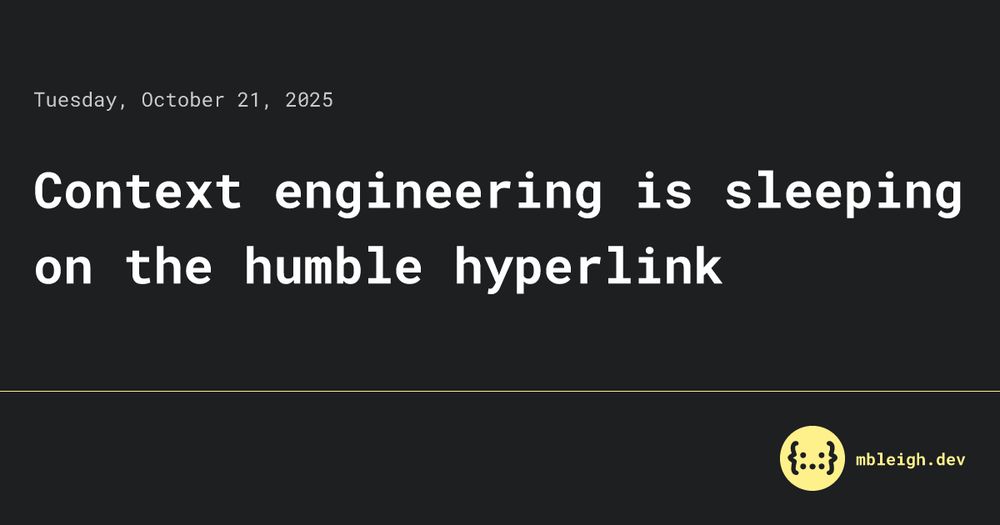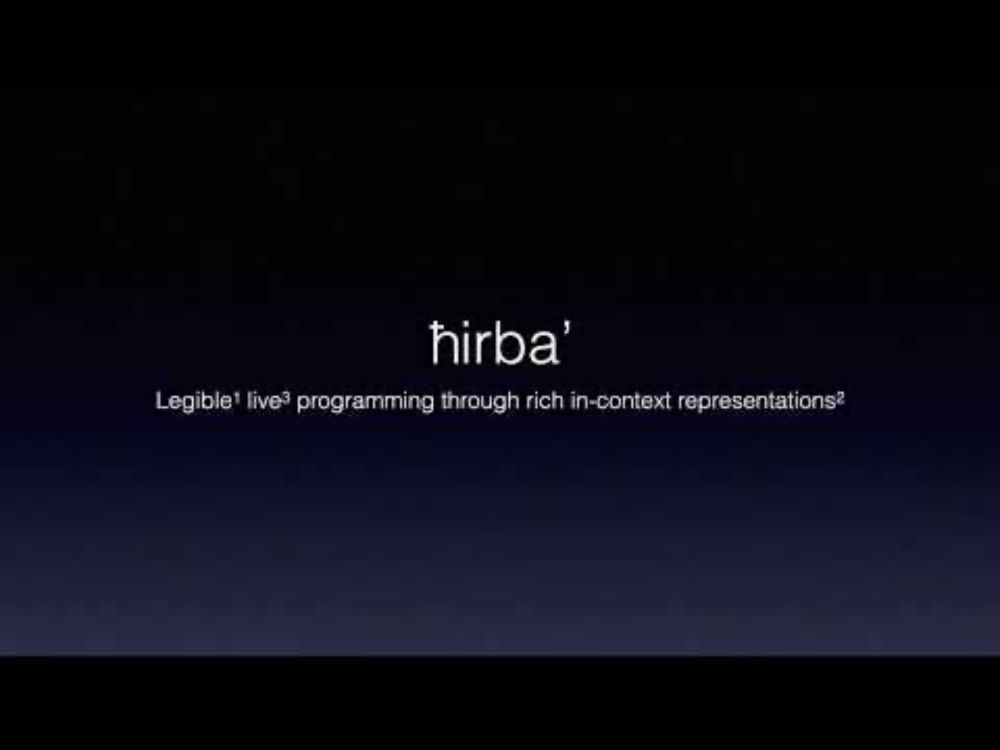
narphorium.com

I wrote about how we're rediscovering structured programming but this time for prompts instead of code.
www.anthropic.com/engineering/...

www.anthropic.com/engineering/...
Paper, code & demos: gabegrand.github.io/battleship
Here's what we learned about building rational information-seeking agents... 🧵🔽
Paper, code & demos: gabegrand.github.io/battleship
Here's what we learned about building rational information-seeking agents... 🧵🔽
Links were powerful enough to build the entire web...I think they'll be critical for building the context for agents as well.

Links were powerful enough to build the entire web...I think they'll be critical for building the context for agents as well.
Part 2 of The Interfaces With Which We Think is out now...
Start at the intro: alexanderobenauer.com/think/
Start at Part 2: alexanderobenauer.com/think/2/
Part 2 of The Interfaces With Which We Think is out now...
Start at the intro: alexanderobenauer.com/think/
Start at Part 2: alexanderobenauer.com/think/2/
I wrote about how we're rediscovering structured programming but this time for prompts instead of code.

I wrote about how we're rediscovering structured programming but this time for prompts instead of code.
Going back to my roots on writing about the inner workings of things, a breakdown of key-value databases and how you might make one from scratch:
nan.fyi/database

Going back to my roots on writing about the inner workings of things, a breakdown of key-value databases and how you might make one from scratch:
nan.fyi/database
Vibe code the first version. Investigate the code for its shape, complexities, needs, failure points.
Then scrap all that and engineer a new version.
I recreated Jef Raskin's 1987 'Canon Cat' user environment and observed myself as I lived in it for a week.
Implementation details, surprises, and more in the essay.
(Why touch grass when you can read 3.2k words on user environments?)
Vibe code the first version. Investigate the code for its shape, complexities, needs, failure points.
Then scrap all that and engineer a new version.
martinfowler.com/articles/exp...


githubnext.com/projects/cop...

githubnext.com/projects/cop...
That said, HRM and TRM are fascinating proof‑of‑concepts that show what’s possible with relatively small and efficient architectures. I'm still curious what the real‑world use case will look like. Maybe they could serve as reasoning or planning modules within a larger tool‑calling system.
That said, HRM and TRM are fascinating proof‑of‑concepts that show what’s possible with relatively small and efficient architectures. I'm still curious what the real‑world use case will look like. Maybe they could serve as reasoning or planning modules within a larger tool‑calling system.
Sign up for beta access to visr.sh: it's like as if Granola AI and #tmux had a kid.

Especially interested in upcoming features to ground the specs to verify that the work is done correctly

Especially interested in upcoming features to ground the specs to verify that the work is done correctly

Paper: andrewhead.info/assets/pdf/t...

arxiv.org/abs/2509.13351

arxiv.org/abs/2509.13351
youtu.be/2DRWUgK-RdA

youtu.be/2DRWUgK-RdA
Then you might be interested in my new project `litelines`.
Litelines lets you visualize the selected path by the LLM.
It supports a Pydantic schema as a response format, as well as regular expressions.


Then you might be interested in my new project `litelines`.
Litelines lets you visualize the selected path by the LLM.
It supports a Pydantic schema as a response format, as well as regular expressions.
www.youtube.com/watch?v=MbWg...
www.youtube.com/watch?v=MbWg...


